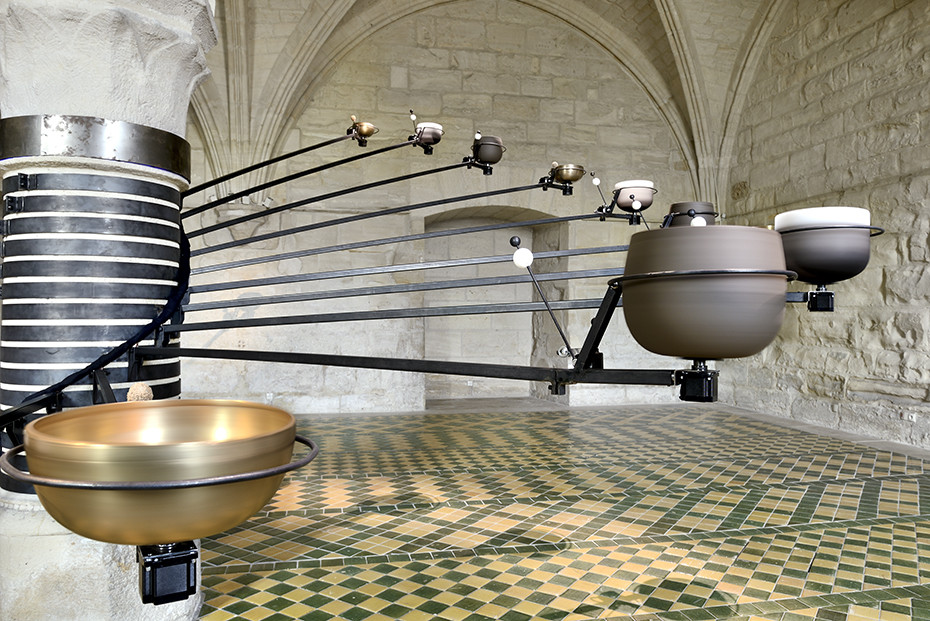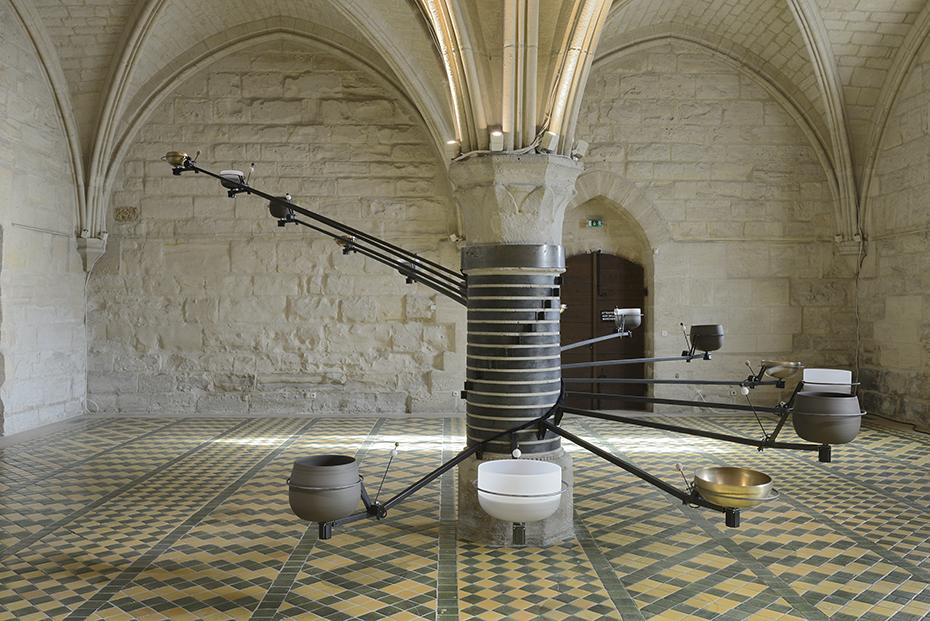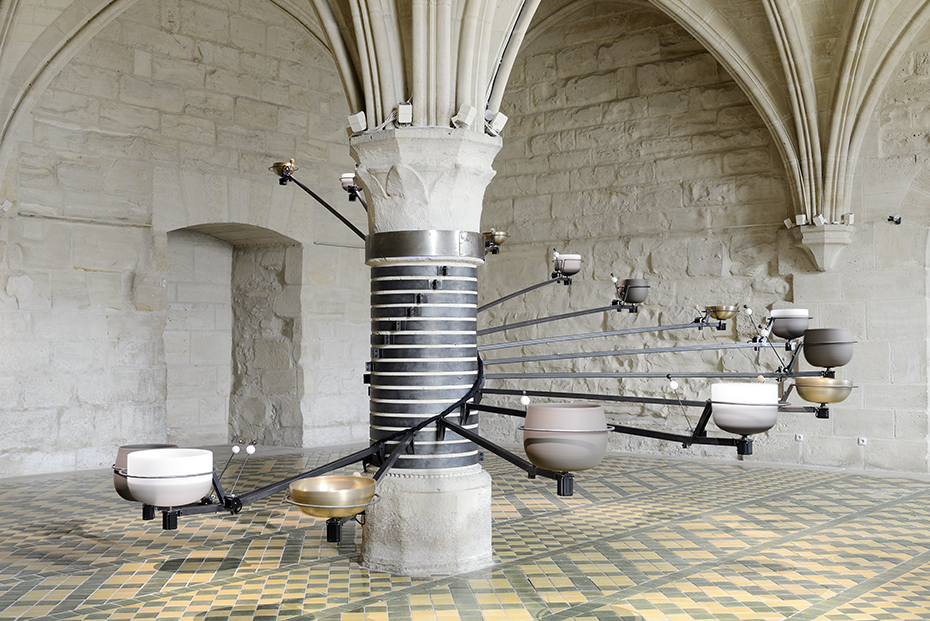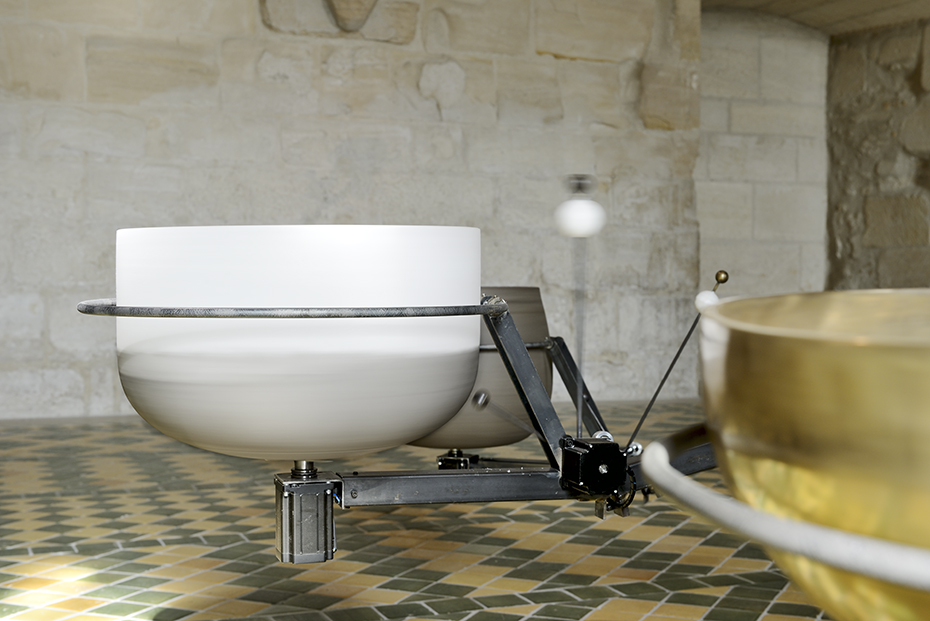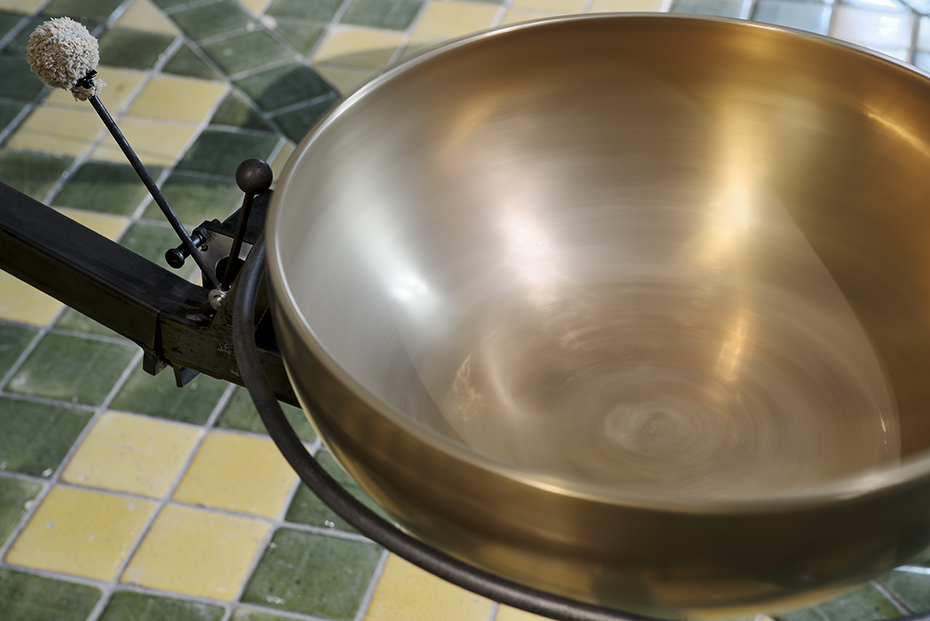Sous forme de signaux électroniques, les ondes entament leur propagation en activant une installation sonore disposée autour du pilier central du parloir. Sa structure emprunte à la forme du corset, à celle d’une aile déployée ou à la géométrie d’une suite de Fibonacci. Elle est composée d’une quinzaine de bras de métal agencés en spirale, chacun pourvu à son extrémité d’un bol chantant motorisé, qui tourne sur lui-même, et d’une mailloche automate, qui le fait vibrer par frottement ou par percussion. Certains instruments sont des creusets en quartz, d’autres sont réalisés en métal, selon un alliage rare de sept matériaux qui convoque la symbolique tibétaine des astres, des jours de la semaine ou des principaux chakras ; d’autres sont moulés en terre cuite, dont l’artiste a découvert par hasard les qualités résonantes, associant sa signification ésotérique à une matérialité plus brute. La partition générée par les ondes captées à l’extérieur se donne à entendre avec force et acuité dans cette salle carrée à l’acoustique harmonieuse, marquée par l’homogénéité de la réverbération et l’amplitude de la résonance. Pour Charlotte Charbonnel, il s’agit de donner corps à des forces naturelles invisibles dont la présence est ici amplifiée dans ces nappes sonores, aussi aériennes que telluriques.
Florian Gaité
*Le nom latin de Maubuisson, Malodunum, est formé soit à partir de l’adjectif malus, a, um (mauvais, funeste, méchant), soit à partir du substantif malus, i (pommier), associé à dunum – forme dérivée du toponyme gaulois duno (enceinte fortifiée ou colline) – ou, plus vraisemblablement, à une forme corrompue de dumus, i (buisson).
Transformed into electronic signals, the waves begin to take effect by activating a sound installation arranged around the parlor’s central pillar. The structure draws on the shape of a corset, a spread wing and the geometry of a Fibonacci sequence. It comprises fifteen spiral metal arms with, at the end of each, an electrically driven, revolving singing bowl and an automated mallet that makes the bowl vibrate by friction or percussion. Some of these instruments are quartz crucibles, others are made of a rare, seven-part alloy symbolizing, for the Tibetans, the heavenly bodies, the days of the week and the principal chakras; others still are of moulded terra-cotta, which resonant qualities the artist discovered by chance in making the association between its esoteric significance and a cruder materiality. The musical score generated by the waves from outside makes itself heard powerfully and incisively in this square, acoustically harmonious room, marked by the evenness of its reverberation and the amplitude of its resonance. For Charlotte Charbonnel the goal is to materialize invisible natural forces which presence here is magnified in layers of sound as ethereal as they are telluric.
Florian Gaité
*The Latin name for Maubuisson, Malodunum, derives either from the adjective malus (bad, evil, nasty) or the noun malus (apple tree), in association with dunum, a Latinised form of the Gaulish duno (a hill or fortified compound) or – more likely – a corruption of the Latin dumus (bush).
Crédit photo : Catherine Brossais
